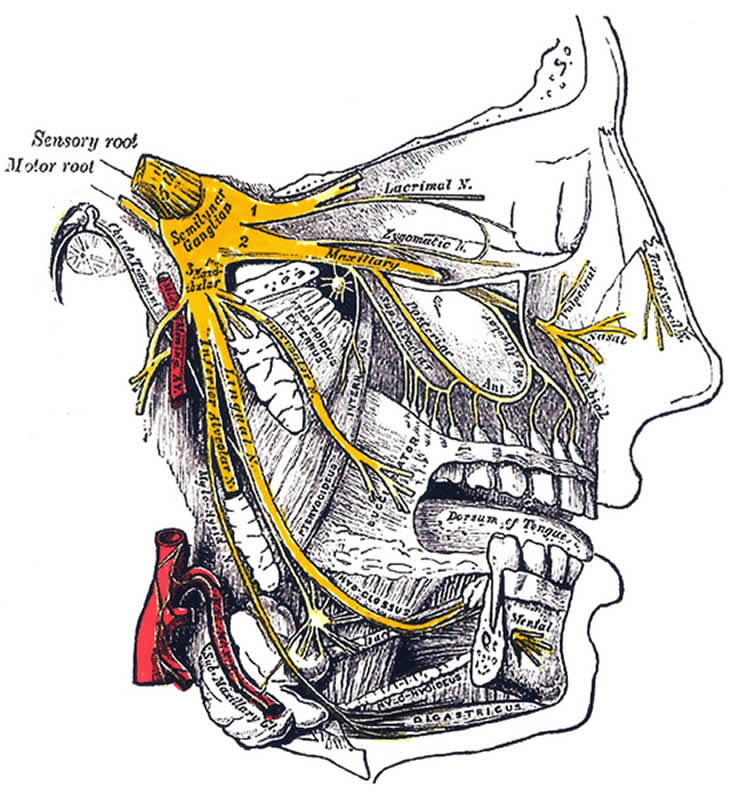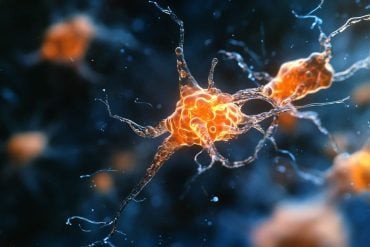Summary: Researchers report trigeminal nerve stimulation, administered during sleep, is both effective and safe for treating ADHD in children. The study reveals the treatment helps to reduce behavioral symptoms of ADHD and increases activity in brain circuits that modulate hyperactivity.
Source: Elsevier
Currently approved in Canada and Europe for adults with medication-resistant depression and seizures, trigeminal nerve stimulation (TNS) has been found to be an effective and safe means of treatment for children with attention deficit hyperactivity disorder (ADHD), reports a study published in the April 2019 issue of the Journal of the American Academy of Child and Adolescent Psychiatry (JAACAP).
TNS utilizes a small stimulator worn on a child’s clothes to emit a low-level current, powered by a 9-volt battery. Thin wires are connected to the device with an adhesive electrode patch worn across the forehead during sleep. Mild stimulation to the skin, barely or not perceptible to the child, led to activation of deeper brain areas associated with concentration and impulse control. Children wore the patch an average of eight hours nightly and patches were removed each morning.
“ADHD is estimated to affect 9.5 percent of school-age children and 4.4 percent of adults,” said James McGough, MD, Professor and child psychiatrist at the Jane & Terry Semel Institute for Neuroscience and Human Behavior at University of California, Los Angeles, CA, USA. “Our current treatments mostly depend on medication with some role for behavioral therapies. Although there is great demand for non-medication ADHD treatments, the most popular options have minimal, if any, scientific evidence supporting their use.”
Investigators enrolled 62 children ages 8-12 years old and randomized them to receive active or sham TNS nightly for 4 weeks. Benefits in the active group were observed within the first week of treatment, with increasing improvement over the remaining weeks. Improvement compared with the sham group was demonstrated by the ADHD-Rating Scale (p = .005), the study’s primary outcome measure, and the Clinical Global Impression – Improvement scale (p = .003). The size of treatment improvement was similar to that seen with currently FDA-approved nonstimulant ADHD medications.
In addition to reductions in behavioral ADHD symptoms, investigators found positive changes in brain activation with active TNS, measured by electroencephalography (EEG). This finding, consistent with NIMH research priorities, emphasize measurable changes in neurological functioning in addition to behavioral improvement, suggesting that TNS has beneficial effects by increasing activity in brain circuits that modulate hyperactivity and impulsivity. Study results further suggested that TNS might be effective in reducing pediatric anxiety symptoms, consistent with other studies of TNS for adult depression and post-traumatic stress disorder.

A major limitation of many studies of non-medication ADHD treatments relates to difficulties maintaining effective blinding of the sham control condition. Investigators in this study demonstrated that after the initial week, parents of children in both active and sham TNS groups had equal expectation of benefit, suggesting that the study design successfully concealed which treatment children were receiving. This result, in addition to differences in brain activation measured by EEG, further supports the study’s conclusion regarding the potential of TNS for ADHD therapy.
“I am excited that we found significant reductions in ADHD symptoms, as well as associated improvements in brain functioning, as a result of TNS therapy,” added Dr. McGough, the lead author of the study. “Treatment was well accepted by patients and families, compliance was high, and there were no clinically important side effects. TNS has great potential as an additional option for managing ADHD.”
Source:
Elsevier
Media Contacts:
Mary Billingsley – JAACAP Editorial Office
Image Source:
The image is credited to Commons Wikimedia user btarski and is licensed CC BY SA 3.0.
Original Research:
“Double-Blind, Sham-Controlled, Pilot Study of Trigeminal Nerve Stimulation for ADHD”
James J. McGough, MD, Alexandra Sturm, PhD, Jennifer Cowen, PhD, Kelly Tung, BS, Giulia C. Salgari, MS, Andrew F. Leuchter, MD, Ian A. Cook, MD, Catherine A. Sugar, PhD, Sandra K. Loo, PhD.
Journal of the American Academy of Child & Adolescent Psychiatry , Volume 0 , Issue 0.
doi:10.1016/j.jaac.2018.11.013
Abstract
Double-Blind, Sham-Controlled, Pilot Study of Trigeminal Nerve Stimulation for ADHD
Objective
Trigeminal nerve stimulation (TNS), a minimal-risk noninvasive neuromodulation method, showed potential benefits for attention-deficit/hyperactivity disorder (ADHD) in an unblinded open study. The present blinded sham-controlled trial was conducted to assess the efficacy and safety of TNS for ADHD and potential changes in brain spectral power using resting-state quantitative electroencephalography.
Method
Sixty-two children 8 to 12 years old, with full-scale IQ of at least 85 and Schedule for Affective Disorders and Schizophrenia–diagnosed ADHD, were randomized to 4 weeks of nightly treatment with active or sham TNS, followed by 1 week without intervention. Assessments included weekly clinician-administered ADHD Rating Scales (ADHD-RS) and Clinical Global Impression (CGI) scales and quantitative electroencephalography at baseline and week 4.
Results
ADHD-RS total scores showed significant group-by-time interactions (F1,228 = 8.12, p = .005; week 4 Cohen d = 0.5). CGI-Improvement scores also favored active treatment (χ21,168 = 8.75, p = .003; number needed to treat = 3). Resting-state quantitative electroencephalography showed increased spectral power in the right frontal and frontal midline frequency bands with active TNS. Neither group had clinically meaningful adverse events.
Conclusion
This study demonstrates TNS efficacy for ADHD in a blinded sham-controlled trial, with estimated treatment effect size similar to non-stimulants. TNS is well tolerated and has minimal risk. Additional research should examine treatment response durability and potential impact on brain development with sustained use.
Clinical trial registration information
Developmental Pilot Study of External Trigeminal Nerve Stimulation for ADHD; https://clinicaltrials.gov; NCT02155608.







